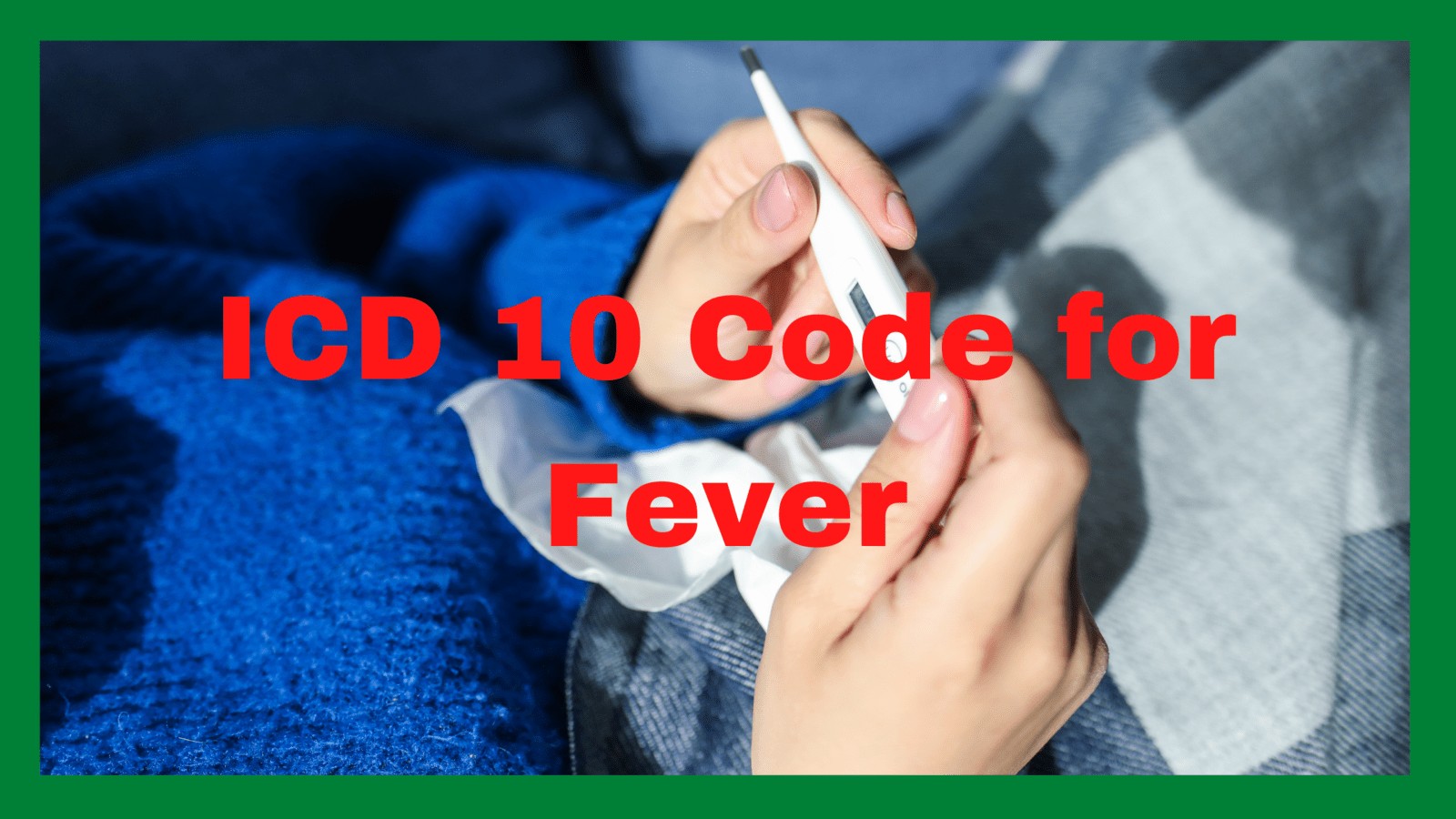People with weak immunity get fever very quickly, fever can be seen more in children and the elderly. Fever is the most commonly found health problem. Because fever is spread by infection of small bacteria, so there are many types of it like malaria, flu, dengue etc. Fever is usually a common health problem, which can be influenced by eating, exercising, sleeping and personal factors. As per AAPC coding guidelines ICD 10 For Fever is R50. 9. Other related ICD codes for fever is mentioned in below table.
What is fever ?
When any type of infection is increasing in the body, our immune system starts increasing the body temperature to attack that infection. When the body temperature is higher than normal, it is called fever or pyrexia. Normal body temperature can be different for everyone but it is between 97 to 99 degree Fahrenheit.A temperature of 100.4 degrees Fahrenheit is called a fever. When the infection is severe, the body temperature continues to rise, the person suffering from fever starts feeling cold until the temperature level decreases or returns to normal. Go. People usually describe it as having chills. The fever will usually get better on its own. However, if the body temperature rises too high and does not come down, it could be a symptom of a serious infection, in which case it is necessary to seek medical attention immediately.For adults, a fever occurs when their body temperature exceeds 100.4°F.
Causes of Fever
There can be many reasons for fever, it is not necessary that there should be a special reason, your lifestyle and eating habits also affect your body temperature. Fever can be caused by a variety of infections, inflammatory disorders, and other conditions. Common infections include the flu, pneumonia, appendicitis, and urinary tract infections may be responsible for the fever. Small babies may develop fever during teething. Below are some other reasons-
- Infection of ear, lungs, bladder, skin, kidney or throat etc.
- Food poisoning can cause fever.
- Severe sunburn or heat exhaustion.
- stress
- Blood clots.
- Eating anything extremely cold.
- Malignant tumour.
- Antibiotics.
- Bathing at indefinite time.
- Coronavirus disease (COVID-19). Hyperthyroidism and other hormonal disorders.
- Excessive work.
- Intake of certain drugs used to manage high blood pressure or seizures.
Effects of Fever on Body
In most of the cases, it is seen that fever gets cured on its own or with home remedies. However, a high fever that persists and does not respond to normal treatment can have dangerous consequences, including febrile seizures, brain damage, and even death. Due to high fever, you may sweat profusely, apart from headache, body pain may also occur and in some cases the patient may even faint. Apart from this, he may have chest pain and may face pain while urinating.
Symptoms of Fever:
There cannot be general symptoms of fever in all persons, fever can show different symptoms according to age in different persons. A person who has developed a very high fever (i.e. a temperature greater than 104 degrees Fahrenheit) may experience hallucinations, convulsions and confusion, and may also experience dizziness. If we talk about the symptoms of fever in children, then it is completely different. In children who have fever as a result of infection, symptoms like ear pain, vomiting, sore throat, severe abdominal pain, diarrhea and cough can be seen. Apart from these, some of the more common symptoms are mentioned below-
- Increasing and unusual skin rash.
- Pain in muscles (body) and joints.
- Light sensitivity.
- Stiffness in the neck.
- Loss of taste and loss of appetite.
- Pain when you tilt your head forward.
- State of mental confusion.
- Vomiting.
- Difficulty in breathing.
- Chest pain.
- Abdominal pain.
- Pain during urination.
- Convulsions or seizures.
How to protect our self from fever?
- Make sure that you have given hands after the washroom, after visiting a public place, after meeting a sick person and before eating food.
- There are many types of fever and most of them are caused by germs that cause infection. These germs enter the body through our nose and mouth. So try not to touch your face with your hands.
- Most infection-causing viruses and bacteria enter our body through the nose, eyes or mouth. That’s why it is important that you avoid touching these organs.
- Avoid germs, try to cover your mouth with a handkerchief or any other thing while sneezing and coughing and keep a distance from the person who is sneezing and coughing.
ICD 10 Code For Fever :
| ICD Codes | Description |
| R49.22 | Hyponasality |
| R49.8 | Other voice and resonance disorders |
| R49.9 | Unspecified voice and resonance disorder |
| R50 | Fever of other and unknown origin |
| R50.2 | Drug induced fever |
| R50.8 | Other specified fever |
| R50.81 | Fever presenting with conditions classified elsewhere |
| R50.82 | Postprocedural fever |
| R50.83 | Postvaccination fever |
| R50.84 | Febrile nonhemolytic transfusion reaction |
| R50.9 | Fever, unspecified |
| R51 | Headache |
| R51.0 | Headache with orthostatic component, not elsewhere classified |
| R51.9 | Headache, unspecified |
| R52 | Pain, unspecified |
| R53 | Malaise and fatigue |
| R53.0 | Neoplastic (malignant) related fatigue |
| R53.1 | Weakness |
| R53.2 | Functional quadriplegia |
| R53.8 | Other malaise and fatigue |
| R53.81 | Other malaise and fatigue |
Conclusion :
Through the post, we have come to know what is fever, how to avoid fever, what are the causes of fever, what are the symptoms of fever. Fever is a common health problem which is developed by our immunity to protect the body from other infections. Fever is usually characterized as a sudden rise in temperature due to a bacterial or viral infection. There are many types of fever, so its causes and symptoms can also be different.As the body temperature of a person rises, the patient then starts feeling cold. A person’s life can be in danger if the temperature rises high, so in such a situation, see a doctor immediately.
FAQs
Ans. According to doctors, viral fever is caused by virus infection. Due to this virus, there can be problems of cold, cold and fever. When our immunity fights this virus, our body temperature rises. In most of the cases, viral fever gets cured on its own within 5 to 7 days.
Ans. Dengue is also a type of viral fever but dengue fever is caused by the bite of an infected mosquito. After a few days of mosquito bite, its symptoms start appearing. If dengue is not treated properly, the person’s condition can become serious. Due to dengue, there is a rapid decrease in platelets, due to which bleeding problems can occur. Apart from this, its effect is also seen on the liver.
Ans. Cough in initial symptoms. Running nose due to cold. Sharp pain in the throat and sneezing. Sudden rise in body temperature. Both joint and muscle aches.
Note- All information ICD 10 Code for Fever is updated from reliable and authorized source of information and USA gov authorized web portals and other source of information like CMS, AAPC, ICD10data, etc. All content is used for information and education purpose only.

